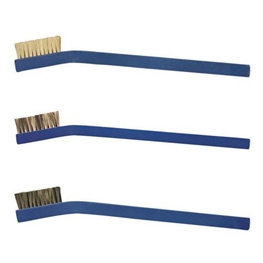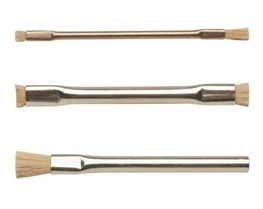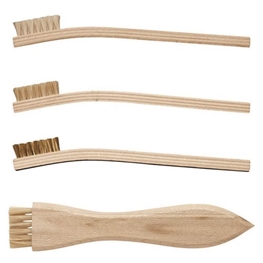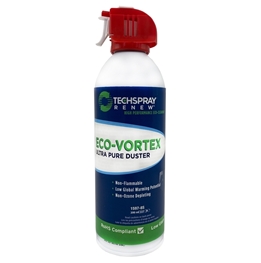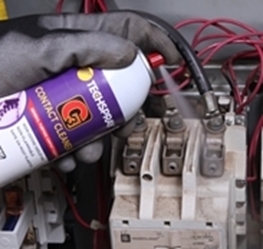-
Powerful cleaners - grease and oil flow right off
-
Safer solvents - do not contain TCE, nPB or Perc
-
Safe on the most common plastics
-
Available in spray can and bulk packaging
FAQ's
While the contact surfaces of connectors are metal, they are often housed in plastic, and rubber gaskets to seal everything from the outside environment. If the solvent used in a contact cleaner is incompatible with the plastic, it can craze (create small cracks), embrittle, or soften the material. Rubber seals may swell, shrink or even dissolve if exposed to a harsh solvent. Rigid plastics like ABS, polycarbonate (trade name Lexan), and acrylic materials like Plexiglass can be very sensitive to harsh solvents like toluene, xylene, and acetone. Alcohol and hydrocarbon based solvents tend to be better on sensitive plastics. Rubber, silicone or other seals or gaskets made of elastomeric (soft) materials can have a tendency to swell or shrink with exposure to harsh solvents. After the solvent flashes off, they may spring back to their original dimensions, or be permanently changed, impacting the effectiveness of the seal. Polyester or Teflon based gasketing materials are less prone to this type of damage from harsh solvents. A new contact cleaner should always be tested before use on any questionable applications, using any live (and expensive) equipment.
Dielectric strength is defined as the maximum electric field that the material can withstand under ideal conditions without breaking down. Breaking down in this sense is described as a failure of insulating properties, where the electricity breaks free of the conductors and burns a path through the weakest area of the insulating materials. And, it’s not a breakdown over time. As soon as there is enough free electricity it will immediately or, in a nanosecond, discharge through the insulating material. If it doesn’t discharge through, it’s going to severely degrade it to the point it is of no insulating use. So you want a cleaner with high dielectric strength because you want it to clean without conducting. Remember, certain soils such as carbon are effective conductors of electricity, and both the combination of the conductivity of the soil and cleaning solution need to be taken into consideration. You want the cleaner to act as an insulator to protect you while you are using it. It seems basic, but it should clean an energized surface, not conduct electricity back to you or to your insulating material and it should not corrupt or attack the circuit you are cleaning. When selecting a contact cleaner, look for dielectric strength in the product specifications. The higher the number the better, and you want to avoid spraying energized contacts with anything below 30 kV (30,000 volts).
There is no way to give a definite answer for all circumstances, because safety is highly dependent on the amount voltage and amperage as well as environmental factors such as the equipment, working environment, etc. On the other hand, choosing a contact cleaner with high dielectric strength or breakdown (also called withstand) voltage increases safety when you do have to clean energized equipment. BEFORE you start spraying, we strongly recommend you shut down power to avoid the potential of sparks, electrical shorts or discharges, and other safety hazards. If, for whatever reason, you don’t have the option of disconnecting the power, look for electrical contact cleaners with a dielectric strength above 30 kV (30,000 volts). Choosing a nonflammable cleaner would also add a layer of safety in case there is a spark.


